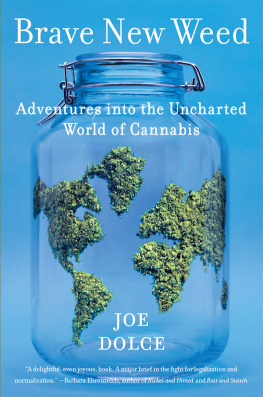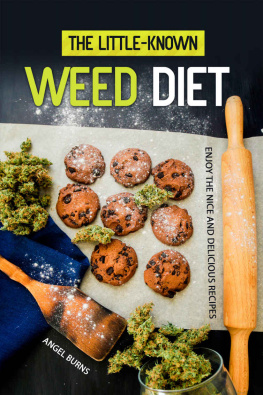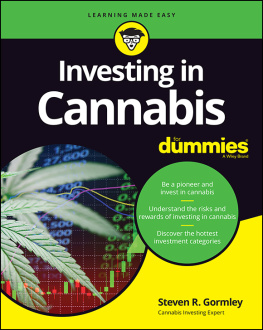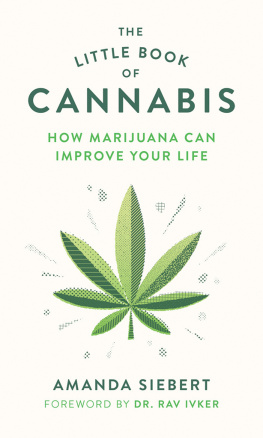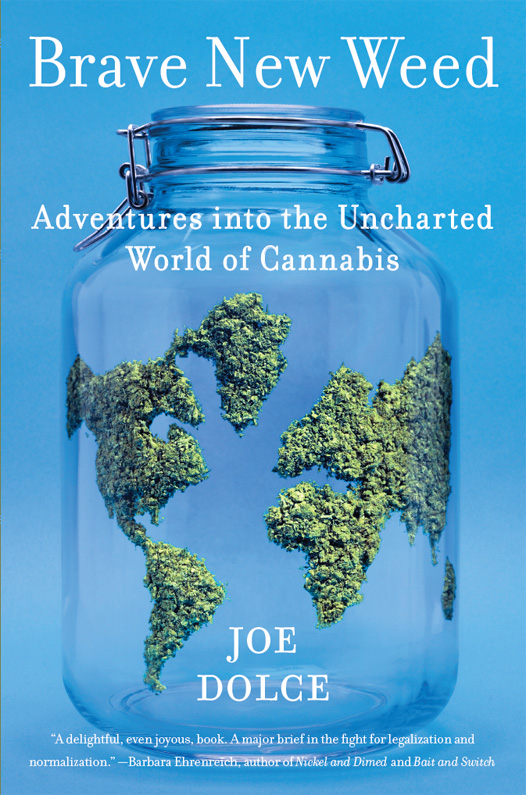A plant whose virtues have not yet been discovered.
New England
W ant to see my new hobby?
It was 8:17 on a crisp Sunday morning in the autumn of 2012 when my cousin awakened me with a cup of coffee and that question. He was standing over my bed, practically panting with an anticipation that made saying no impossible. Little did I know that his new hobby was about to change my life.
I sipped my coffee, pulled on my clothes, and followed him downstairs through the garage, then behind a padlocked door that led me into a foam-insulated antechamber that housed plant food, smelled like Odor-Eaters, and hummed with machine-made white noise. He flashed me a broad smile as he unlocked another door, which led me into a basement grow room and the source of the new hobby: two floor-to-ceiling Mylar bags that, when unzipped, revealed six budding female cannabis plants, all basking in the hot yellow glow of one 400-watt high-pressure sodium lightbulb. The girls oiled the air with a skunky, grassy scent, and they looked very happyas they should be, living in a cushy, digitally controlled 68-degree climate, bathing in a steady cloud of intoxicating CO2, and guzzling the finest organic nutrients.
I was impressed by the simple technical apparatus, but I was far more impressed by the fruits of my cousins labor a few hours later, when I had the pleasure of sampling a strain called Super Lemon Haze. Finally, after some thirty years of smoking whatever pot came my way, I found something that seemed to complementno, enhancemy biology. The aroma was citrusy and the taste was smooth enough. And the effect? Lets say that my brain ticked away linearly, laterally, and happily with no soporific slouch. No paranoia. No cloudy thinking. It was energizing yet soothing at the same time, as if my body were radiating sunshine from the inside out. I need to get reacquainted with this plant, I told myself as we retired to my cousins man cave, where freshly harvested stalks were curing on wire hangers, and long, sugar-coated colas (the top buds of marijuana plants) were stored in Mason jars, as if on exhibit in a museum.
On a website called 420magazine.com, my cousin showed me some extremely cool electromagnified photos of mature cannabis flowers, each tiny leaf carpeted with glistening sacs filled with resins. These sacs are called trichomes, he explained, and they are equally responsible for the plants survival and its allure. Botanically, they produce the powerful chemicals that repel predatory insects, inhibit deadly molds, and bring humans and some animals intoxicating pleasure. In eight more weeks, the girls in his basement would mature into ladies and their sacs would be bubbling with sticky, stinky, gluey, wet resinsand thats the moment theyd be chopped down and killed. Is it an accident that men have traditionally been the keepers of this ritual, given its unavoidable Freudian connotations?
That comment elicited little more than a shrug from my cousin. Like many growers, he was more interested in talking about plants than my snarky observations on gender stereotypes. The resinous heads of the plants, which are plump with THC, plus powerful essential oils called terpenes, flavonoids, and hundreds of other compounds, are revered by breeders, who have, in the last forty years, created the strongest strains ever known. You harvest the plants just as the trichomes start to go cloudy, my cousin explained. Thats when theyre at the height of their powers.
My cousin, who once told me I couldnt write one word that would ever teach him anything, has never shown any propensity for higher education in the traditional sense. But he has always had a green thumb and a taste for this plant. That, plus his excessive desire for privacy and mistrust of law enforcement, has driven him to cultivate his pursuit in well-guarded secrecy. Even his family is seemingly unaware of what grows below its living room. He once broached the topic with his wife, a religious Christian, and the conversation went something like this:
I have a new hobby, dear. Do you want to hear about it?
Not really.
And that was that.
I hadnt smoked much in the last fifteen yearsas with many people in my generation, I found that weed had become too strong, too unpredictable. There were too many nights spent paranoid and unhappy, or asocial and cocooned in self-absorption, or just a blink away from sleep. If I was going to alchemize my consciousness, I wanted to go up, not down, so I moved on to other pursuits: wine, sport, meditation, yoga, single-malt scotch. But that day it struck me: If my cousin in rural New England could learn about strains, obtain the high-quality seeds and the equipment to cultivate them, and then educate himself, mainly through the Internet and in conversations with the guys who ran his local gardening store, about growing prime, organic, pesticide-free bud indoors, then a revolution of sorts had occurred in my absence. Maybe it was time I investigated more deeply.
My timing was auspicious. My great sixteen-year relationship had just ended. We had tried spackling over the problems, addressing, therapizing, ignoring them, whatever it is two people do when they sense things falling, inevitably and irretrievably, apart. We tried because we loved and respected each other, but ultimately we called it quits. It was the same with my career as a magazine editor. For years, I had been pretending to be excited by a profession that once brought me torrents of pleasure; but now it just seemed like work, with all of the drudgery and deadlines and none of the creative charge. I was, for the first time in two decades, adrift, primed for change, ready to dance, drink champagne, recharge my sex life, and reinvent the way I worked. My entire life was in need of a rethink, my vices included.
My headiest pot-smoking days had occurred in college. In the 1970s it was easy to blaze joint after joint and never become too scarily high. When I look back I wonder how it was possible to inhale that amount and still graduate from Northwestern University with a 3.5 grade point average. As it turned out, it was possible because the pot I was smoking then was baby-ass weak compared with todays varieties. The weed I smoked in high school probably averaged 3 to 5 percent THC. By the time I hit college, highly potent sinsemilla had debuted in North America, and the average THC content doubled, then tripled. Todays crops clock in at between 15 and 29 percent THC. That is a significant change, one brought about intentionally by growers and unintentionally by Ronald Reagan. But Im getting ahead of myself.
Once back in New York, I dipped further into this subject. There are hundreds of blogs and Instagram accounts authored by all types of cannabists (a more refined title than pothead or stoner, dont you think?)people who devote themselves to the plant and its many mysteries. Endless words are spewed on techniques of growing. Topics range from soil nutrients to the most powerful and energy-efficient lights to use indoors, from the quietest ventilation systems to the ongoing debates over the benefits of sun-grown versus indoor cultivation or soil versus hydroponic. There are sites devoted to the politics of pot, hash making, oil production, rare strains, cooking with cannabis, curing cancer with cannabis, and other obscure corners of connoisseurship. The most arcane are the real-time videos of grow roomscameras trained on the plants and just left to run, with no irony intended.

